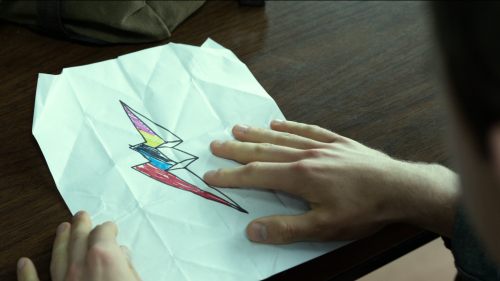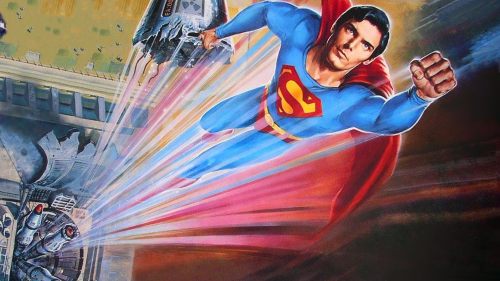Say Something Nice: RAISE THE TITANIC (1980)
“It would have been cheaper to lower the Atlantic,” producer Lew Grade reputedly said of the record-breaking $40m (equivalent to $130m today) his ITC Entertainment sank into the $10m-grossing Raise The Titanic, its failure setting in motion his retirement from the industry and the demise of a company responsible for such cult British TV as The Prisoner, Thunderbirds and The Muppet Show and movies including Capricorn One, the Pink Panther series and The Dark Crystal. Nobody else dared make a Titanic movie for 17 years, and even then Raise The Titanic was used as evidence of James Cameron’s folly.
Grade’s concept was sound enough: establish a franchise to rival James Bond by adapting Clive Cussler’s 1976 novel about all-American hero Dirk Pitt recovering the world’s most famous shipwreck in order to retrieve some unobtainium from its holds to power a missile defence system. Raise The Titanic! was Cussler’s breakthrough, a bestseller which perfected his fusion of maritime mystery and high-tech conflict, although it’s not exactly high literature: Cussler’s writing is functional at best and prone to showing off his research in clunky dialogue, but it’s both readable and entertaining, its pacing hard to fault and the humanity of its characters richer than might be expected in an action thriller.
None of which can be said of the movie. Its script reworked by as many as 17 writers and helmed by Airport ’77’s Jerry Jameson, Raise The Titanic loses not just an exclamation mark but all the complexity and intrigue Cussler uses to keep the plot boiling, resulting in a tedious story of men – the sole female character is inconsequential, but at least she’s spared the novel’s leering nude scene – locating and salvaging Titanic without tension, internal conflict or sense of threat. Cussler hated it.
It doesn’t help that the movie’s hero is an asshole. A fusion of Indiana Jones and MacGyver before those characters even existed, Cussler’s Dirk Pitt is charming and resourceful but most of all curious and courageous, whereas this movie Pitt is a smug jerk who doesn’t do any hard work but still takes all the credit. This guy is not the foundation of a franchise.
If the action hero is a plot-driven blank onto whom the audience can project themselves, they still need to be humanised by qualities and motivations that audience can relate or aspire to, be they character traits or flaws, a clearly stated moral code, or simply the shorthand of an image cultivated by an actor. Cussler resolves this by making Pitt appealing and giving him two sidekicks to banter and work through problems with as a prism through which he can befriend the reader, but this relatability is lost along with his friends in Raise The Titanic. It’s notable that the other cinematic Dirk Pitt adaptation, 2005’s Sahara, is an action-adventure romp that keeps the tone and plot intact while going out of its way to make Pitt relatable by portraying his friendships and qualities in an opening montage of memorabilia, casting bona fide movie star Matthew McConaughey in the role and giving equal prominence to his sidekicks. Cussler hated that one too.
Though holed under the waterline by these dramatic failings, Raise The Titanic truly comes alive at exactly the point Cussler stumbles, the visual power of cinema delivering triumphant spectacle where his words struggle to evoke any sense of wonder in the climactic sequence in which the wreck resurfaces.
The Titanic emerges from the depths in glorious slow motion, the hull’s metallic groans giving way to the roaring of an awoken leviathan as her bow breaks the surface, water arcing into the sky in great plumes and spilling from her funnels as if the great ship is clearing her lungs and drawing breath before John Barry’s majestic score takes over and a long shot passes along her length, taking in every minute detail as the hulk settles amid the plumes of her rebirth and basks once more in the sunshine. It’s magnificent.
All the craft and money poured into the $5m, 55 foot, 10 ton model is right there on the screen – particularly the attention to detail overseen by Titanic illustrator and historian Ken Marschall–in a celebration of the skills of model makers, miniature units and matte painters which were such a backbone of filmmaking in the analogue era.
More than that, the sequence realises a dream that began within days of Titanic’s sinking as proposals were made to salvage the wreck, even though 1912 technology wasn’t up to the task of finding, let alone retrieving, a vessel 2½ miles down. Books and films fuelled the Titanic legend and kept this dream alive, but when Robert Ballard discovered her final resting place in 1985 he found a ship rent in two and scattered across the debris-strewn seafloor, bow bent and buried in the silt, stern a shattered mass of tangled metal, the whole being devoured by deep sea bacteria. While assembling Ballard’s photographs into a composite of the wreck Marschall broke down in tears, telling a friend “My ship: it’s gone.”
Titanic will never be raised, but her legend lives on: there’s the exhibition including the 15 ton Big Piece in the Luxor hotel in Las Vegas illustrating both the ship’s opulence and the forces that tore her apart, there’s Cameron’s Titanic (on which Marschall again served as historical advisor) exploring the microcosm of the period’s social dynamics on board the ship and the terror of its sinking, in turn unleashing a new wave of interest in the story, and there are countless documentaries exploring the ship in life and death. One of them, made for much less than $40m, even lowers the Atlantic.
The hold Titanic still has over us is a complex one, a cautionary tale combining hubris, the romance of a bygone era, and the shattering of innocence and dreams of a better life. Raise The Titanic writes itself into that tale in a cinematic time capsule providing closure as, even if only fictionally, the mighty liner lives again and finally completes her maiden voyage.



